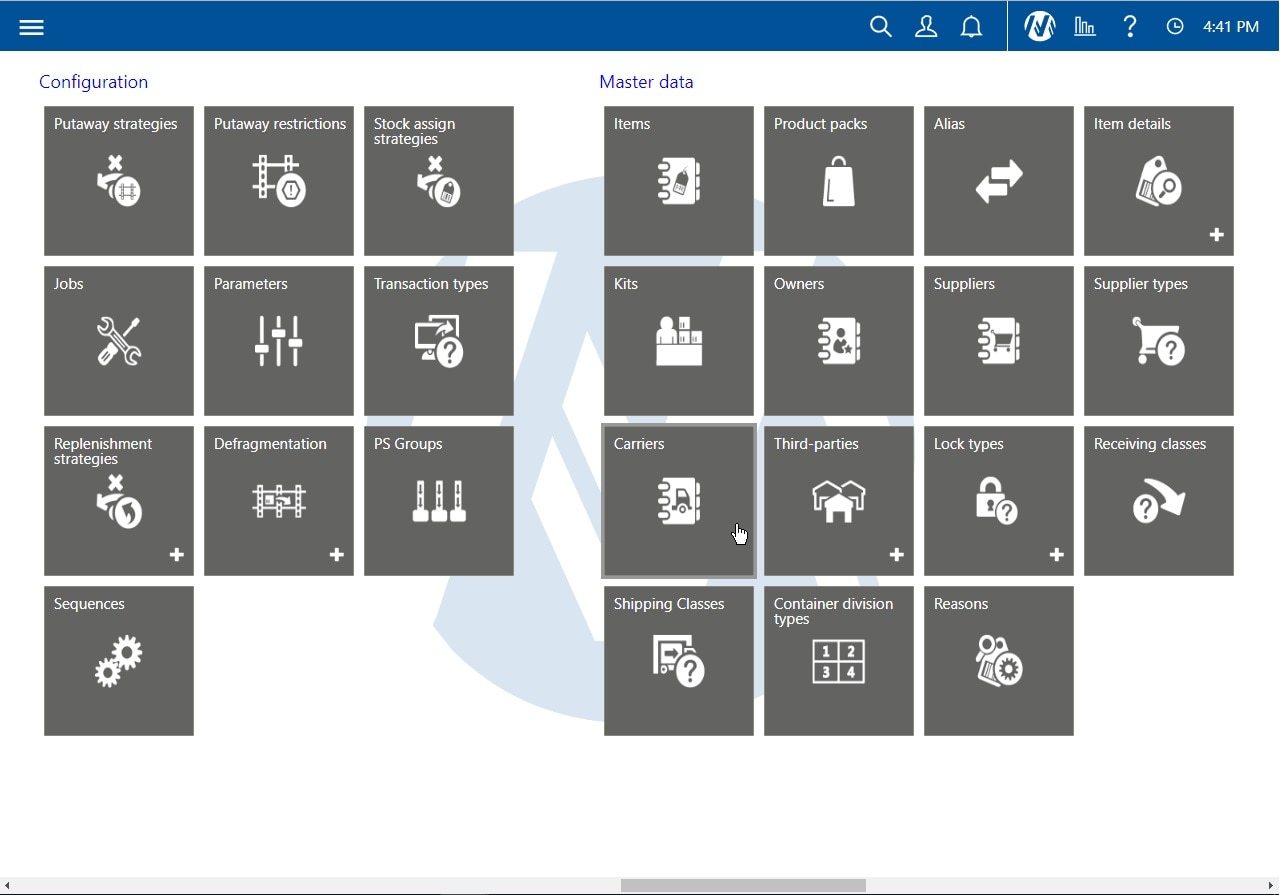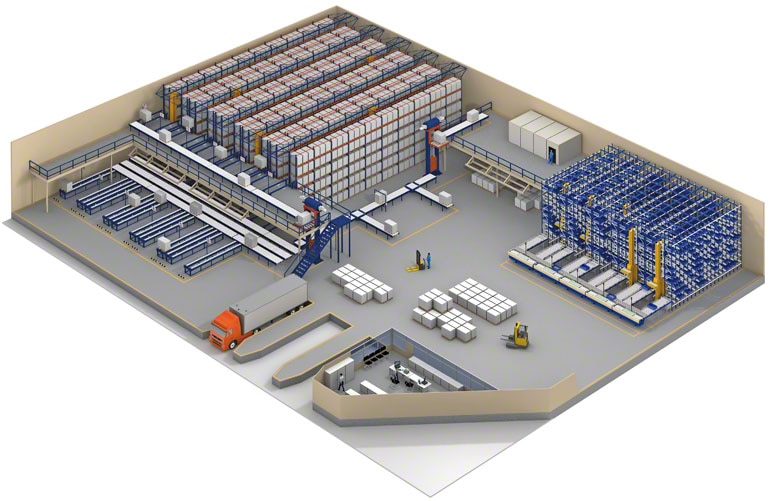Well organized warehouse management allows a company to have the necessary stock, offer the best customer service, have a high warehouse occupancy, and spend the shortest possible time on internal operations. These operations include transport and picking from flow racks, managing stock, and optimizing locations and flows, among other things.

Warehouse management software controls and optimizes the functions of a warehouse.
A warehouse needs to be intelligent, i.e., managed logically and efficiently to get the best possible performance. Nowadays, it is inconceivable that any professional installation would not use a warehouse management software (also known by the initials, WMS), which guarantees the prerequisites listed at the beginning of this article.
Choosing the right WMS is vital. As a minimum, it must allow the company to perform the basic functions involved in managing the warehouse in a simple and intuitive manner.

The WMS manages the diverse operations of a warehouse and thereby works toward the best management of resources.
Who manages the warehouse?
Most warehouses are run directly by the company that owns the installation (the manufacturer or seller). All the system's functions can be integrated with the rest of the company's business management or run separately, or coordinated with this management. The WMS is only used for functions within the warehouse, and through a set of interfaces it establishes real-time communication with the company’s general or central management system.
Moreover, it is increasingly common for companies to outsource their logistics and storage services to logistics operators who, in addition to storage, offer a comprehensive service and carry out picking, assemble components, arrange for transport, etc.
As a result, a single warehouse run by a logistics operator can hold goods from various customers, or owners, which need to be managed correctly. In these cases, the WMS must be able to work according to a multi-owner principle.
The WMS can be multi-owner, which facilitates third party logistics (3PL) of stock.
How are the goods and their location managed?
Warehouse management must be designed according to a previously developed functional analysis. This functional analysis must follow the steps in the flows of materials and reflect the characteristics and type of facility and its components.
When placing the goods in locations within a warehouse, one must take into account the classification of the products as either A, B, or C, with “A” goods inserted at the nearest, most accessible points, as explained in the discussions about flows and rotations.
The location criterion used in the racks will determine the way of working and the effective capacity. There are three ways of determining the location of each unit load:
- With the specific or fixed location system, each SKU is assigned a position or a number of locations determined in advance. The big advantage of this method is the ease with which SKUs can be located. Warehouse personnel know where each item is without having to use IT tools to assist them. The disadvantage of using this system is the loss of effective capacity, which is much lower than the physical capacity (number of locations). This issue is discussed in more detail later on. This system must only be used in very small warehouses that do not need a management system.
- With the random location system (also known as the chaotic, free, or varied system), goods are located in any available empty slot, using an approach previously established and configured (programmed) in the WMS. The classification into A, B, or C is generally taken into account. The system, into which all data has been entered (including empty slots), tells the operator where to place goods or where they can be found. In addition to the perfect management this provides, chaotic location allows the effective capacity of the warehouse to be much closer to the physical capacity, and can exceed 92% of the latter.
- Lastly, the mixed or semi-random location system is the most frequently-used one and combines the specific and random systems, with each of these used according to the type of product or operation to be performed. Therefore, specific locations are used for consumer products, which are generally close to the docks or picking areas, while the random system is used for other products and reserve areas.
The management of slots, mainly in the specific systems, follows a productivity criteria through the optimization of routes, particularly those for preparing orders.
In addition to choosing the appropriate criterion, it is vital to have a WMS suited to each case.

